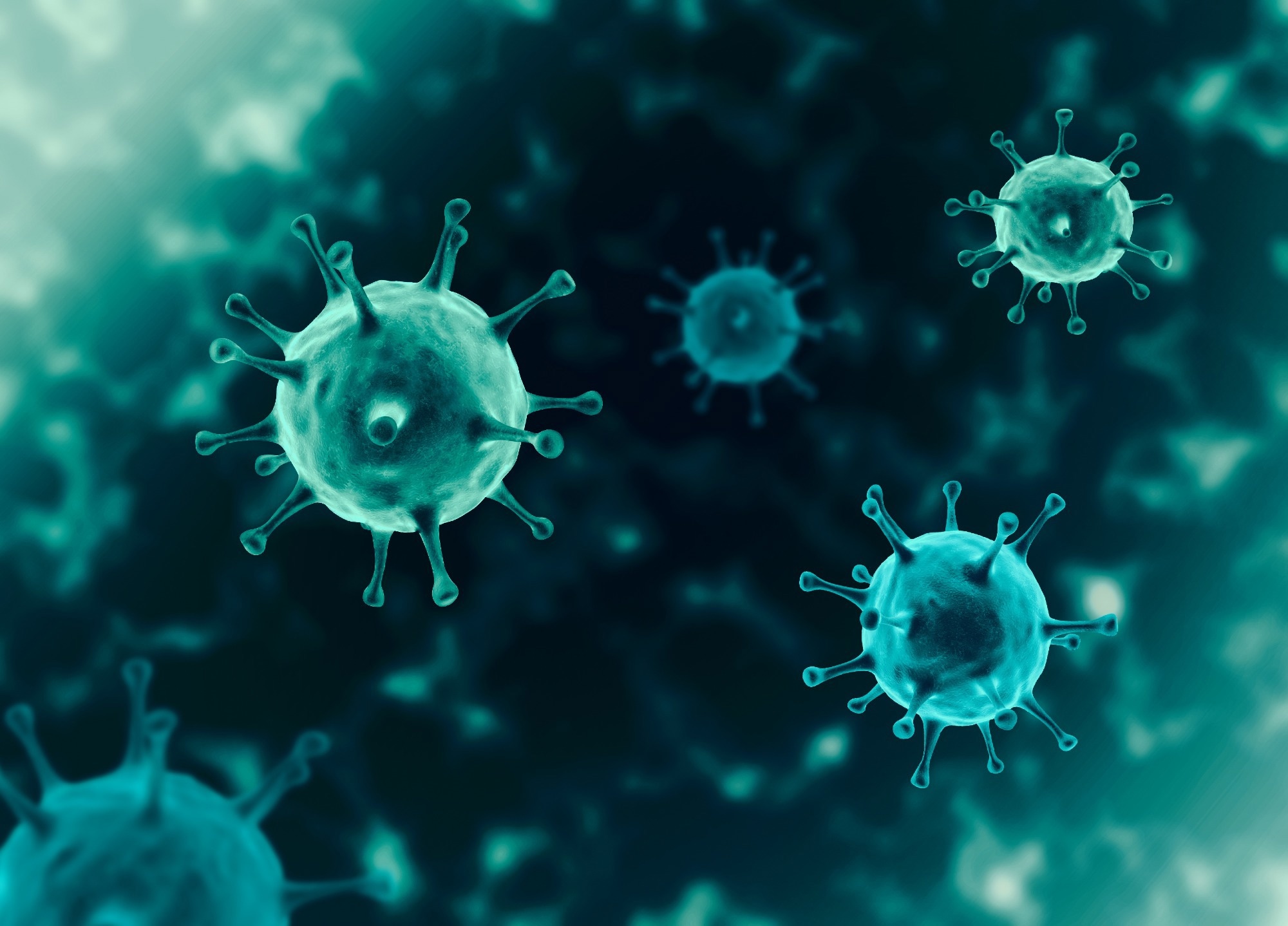Recent speculations propose that nicotinic acetylcholine receptors (AChRs) may serve as additional receptors for severe acute respiratory syndrome coronavirus 2 (SARS-CoV-2) to the host cells – also referred to as the “nicotinic hypothesis.”

A new study published in PNAS Physiology confirmed that the SARS-CoV-2 spike protein does not bind to human AChR’s orthosteric sites, nor does it compete with ACh, choline, or nicotine.
Background
The coronavirus disease 2019 (COVID-19) global pandemic that ensued after the SARS-CoV-2 infection has claimed over 6.5 million lives to date and continues to impact billions worldwide. The aftermath of the infectious disease has proven to be debilitating for many – with the lingering post-acute symptoms – also known as long COVID.
Despite extensive research on COVID-19 symptoms and the pathophysiology of the infection, a clear comprehension of the mechanisms leading to the development of post-acute symptoms remains lacking.
Recently, scientists have proposed a “nicotinic hypothesis” to unravel and explain these mechanisms. It is speculated that AChRs act as an alternative receptor, secondary to the angiotensin-converting enzyme 2 (ACE2) receptor, for SARS-CoV-2-spike protein binding to the host cells.
Furthermore, the binding would occur at a site that overlaps the neurotransmitter-binding (“orthosteric”) sites – such that the spike protein binding site would coincide with the neurotoxins and small-molecule cholinergic ligands competitively.
The study
This experimental study analyzed the “nicotinic hypothesis” of SARS-CoV-2 binding to host cells.
This study employed an equilibrium-type approach of competitive ligand assay to test the nicotinic hypothesis. AChRs expressed on cell surfaces were used and were heterologously expressed on HEK-293 cells.
Full-length human a7-AChR expressed in HEK-293 cells were incubated at a specific concentration of [125I]- a-BgTx and a variable concentration of unlabeled competing ligand with constant rotation – for either 24 or 48 hours at 37°C.
Results
Throughout each curve, the concentration of unbound [125I]-a-BgTx was approximately 1 nM. When the concentration of S375-L390 peptide rose to hundreds of micromoles, it outcompeted [125I]-a-BgTx. Moreover, it was found that a-BgTx competed as effectively as [125I]-a-BgTx at an incubation temperature of 37°C for 24 hours.
The unlabeled toxin concentration displaced half of bound [125I]-a-BgTx was approximately 2.30 nM. The Hill coefficient was about 1.25––which was more significant than the value expected from an inverse agonist. It was inferred that incubation at 37°C for 24 hours was sufficient to detect the binding of the peptides to the human nicotinic acetylcholine receptor (a7-AChR). Additionally, a7-AChR also bound partly to Y674 – R685, though the binding was not sequence-specific.
It is deemed that three arginines present in Y674-R685 and two lysines present in S375-L390 could have been responsible for the displacement of the bound [125I]-a-BgTx at the highest concentration of the four peptides. Meanwhile, [125I]-a-BgTx binding to a7-AChR was completed (one-half) by a low concentration of tetramethylammonium (TMA).
These findings indicated that protonated lysines and arginines had an affinity for a7-AChR and exhibited agonistic effects irrespective of the peptide sequence.
Both α-BgTx and the small-molecule ligands completely outcompeted [125I]-a-BgTx, regardless of the chemical equilibrium approached until the incubation period. Therefore, the binding of sequence-specific spike protein could not be detected due to its extremely low affinity for a7-AChR.
The affinity of Y674-R685 and S375-L390 for a7-AChR could not be detected as they couldn’t conform adequately. The entire S1 domain (Gln-14 to Arg-685) containing both Y674 –R685 and S375-L390 peptides was tested, which had a similar result; however, the [125I]-a-BgTx-receptor-binding was not notably outcompeted by the ∼1.2-μM S1 domain.
Furthermore, an uncleaved variant of S1-S2 ectodomain was tested. Mutations were introduced (including R685S and R682S) within the Y674-R685 span. The ectodomain also couldn’t outcompete [125I]-a-BgTx sufficiently at a single concentration of 375 nM.
Quantitatively comprehending the result, the concentration of the mutant S1-S2 ectodomain saturates half ACE2 at approximately 1.7 nM. Ligand with such a strong affinity for a7-AChR would displace nearly half of bound [125I]-a-BgTx at a minimal concentration of approximately 3.4 nM.
While the amino acid stretch S375-L390 remains constant in the Delta variant (B.1.617.2) and shows little change in the Omicron variant (B.1.1.529). In both variants of concern (VOCs), there is a change in the Y674-R685 stretch. The two VOCs remain highly infectious despite the mutations.
Finally, the S1 domain was tested for its effect on channel function. For this, patch-clamp electrophysiology for whole-cell was used. The S1 domain at a concentration of nearly 20 nM could not elicit currents from HEK-293 cells expressing a7-AChR. Furthermore, co-application of ACh or six hours of bathing of the cells before pre-application of ACh, S1 at the same concentration does not clearly elicit currents that are activated by 100 mM ACh.
Conclusion
It is difficult to completely identify all the membrane receptors to which a virus binds before resulting in an infection. The findings suggested that it is unlikely that the SARS-CoV-2-spike protein alternatively binds to the orthosteric sites of the host AChRs – thus, refuting the “nicotinic hypothesis.”
- Godellas, N. E., Cymes, G. D., & Grosman, C. (2022). An experimental test of the nicotinic hypothesis of COVID-19. Proceedings of the National Academy of Sciences. doi: 10.1073/pnas.2204242119 https://www.pnas.org/doi/10.1073/pnas.2204242119
Posted in: Medical Science News | Medical Research News | Disease/Infection News
Tags: ACE2, Agonist, Amino Acid, Angiotensin, Angiotensin-Converting Enzyme 2, Assay, Cell, Coronavirus, Coronavirus Disease COVID-19, covid-19, Electrophysiology, Enzyme, Ligand, Membrane, Molecule, Nicotine, Omicron, Pandemic, Pathophysiology, Peptides, Physiology, Protein, Receptor, Research, Respiratory, SARS, SARS-CoV-2, Severe Acute Respiratory, Severe Acute Respiratory Syndrome, Spike Protein, Syndrome, Toxin, Virus

Written by
Nidhi Saha
I am a medical content writer and editor. My interests lie in public health awareness and medical communication. I have worked as a clinical dentist and as a consultant research writer in an Indian medical publishing house. It is my constant endeavor is to update knowledge on newer treatment modalities relating to various medical fields. I have also aided in proofreading and publication of manuscripts in accredited medical journals. I like to sketch, read and listen to music in my leisure time.
Source: Read Full Article





